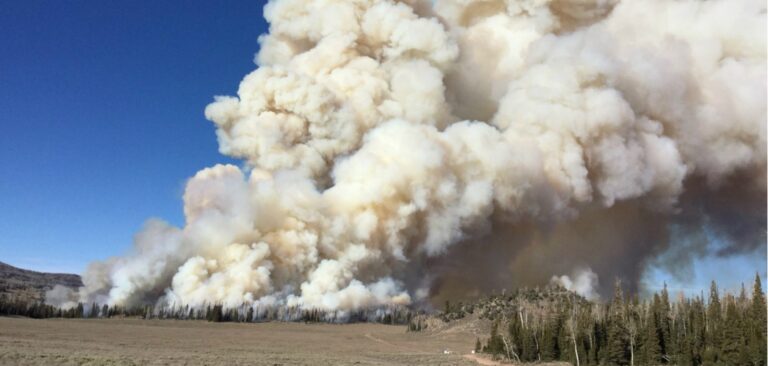NOAA and NASA are joining forces on a research campaign that will use satellites, aircraft, drones, and ground stations to study smoke from wildfires and agricultural crop fires across the USA.
Hundreds of scientists will explore the chemistry of trace gases and aerosols in smoke to improve weather and air quality models, and provide better forecasts to first responders, and public health and land management officials.
“We’ve pulled together an outstanding team of scientists to examine the nature of fires and smoke,” said David Fahey, director of NOAA’s chemical sciences division. “Our long partnership with NASA has taken us literally around the planet and produced many major scientific discoveries. I expect this will be no different.”
Dubbed FIREX-AQ, the project builds on NOAA research from 2016 conducted at the United States Department of Agriculture Fire Science Laboratory in Missoula, Montana, where scientists analyzed smoke from different kinds of vegetation burned at different temperatures.
“Now, we’re taking what we learned in the laboratory to large fires happening in the field where the chemistry evolves over time and distance,” said mission scientist Carsten Warneke, a researcher from the Cooperative Institute for Research in Environmental Sciences working at NOAA.
NASA’s DC-8 airliner, equipped with sophisticated instrumentation, will chase wildfire smoke across western USA for the next month and will be joined by two NOAA Twin Otters, flying at lower altitudes, and also at night when fires smolder and smoke drains into the valleys.
From its base in Palmdale, California, the NASA Lockheed ER-2 will use remote-sensing instruments to collect measurements from much higher altitudes. Ground stations and mobile vans will observe smoke at the surface. All these measurements will be compared with data from NOAA and NASA satellites far overhead to learn how to extract more information from what satellites see.
Later, the DC-8 will sample smoke from agricultural management fires common in southern USA. Finally, scientists will study smoke from a large US Forest Service prescribed burn in Utah.
“Ultimately, the reason we want to understand complex smoke-atmosphere interactions is to provide better forecasts and longer lead times for communities downwind of fires,” said NASA program manager Barry Lefer.



